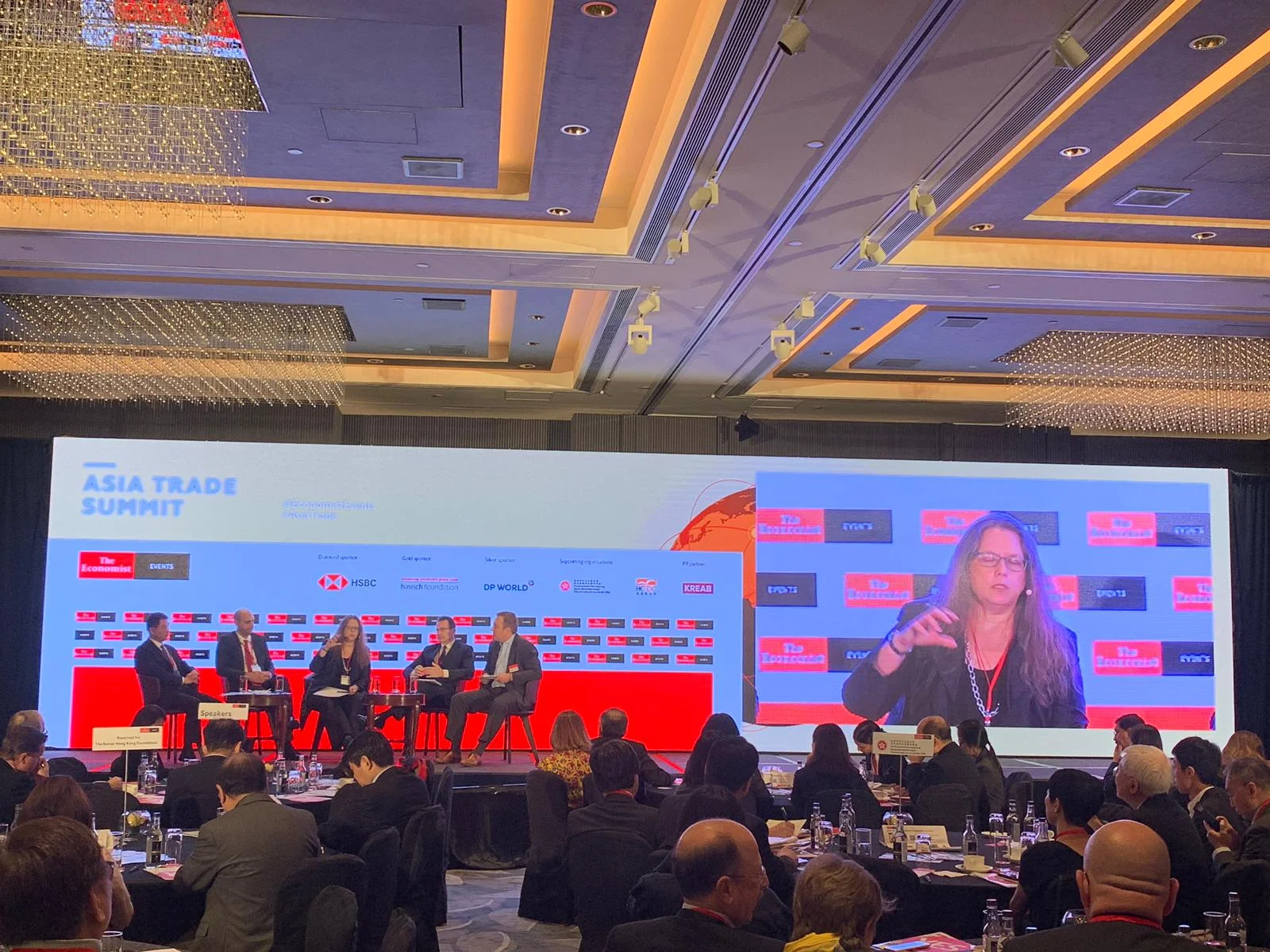Last week I was on a panel for the Economist at the Asia Trade Summit called, “A World Without the WTO.” This week, still in Hong Kong, I’m participating in the American Chamber of Commerce’s annual meetings for Asia.
In both locations, many have flatly stated that the global trade regime is broken and should be discarded.
These are dangerous ideas for companies to adopt. If firms do believe that the global trade regime, anchored on the World Trade Organization (WTO), is fundamentally broken and should be abandoned, business is in trouble.
Companies have forgotten how much the global trade regime matters to daily firm operations. If it did, in fact, collapse, the result would be a disaster.
The global trade rules are like air. They have existed for so long that companies and consumers take them for granted. They don’t even notice them any longer. But, like air, if it suddenly went away, firms and consumers would discover to their great dismay that they actually like and need air (or the global trade system) very, very much.
Why do firms need the WTO? Start with the obvious issues. Right now, 164 countries are constrained in what they can do with tariffs rates. Up until this past year, WTO members did not just randomly hike tariffs overnight.
Keeping tariffs consistent has allowed firms and customers to have stability and reduce risk.
Two simple examples show what happens when this tariff stability is gone. Watch how firms are scrambling in the UK as a result of Brexit. The single biggest challenge for companies dealing with Brexit now is the complete lack of certainty on what will actually happen on March 29. Will tariffs, as the simplest example, reset? Will they go to the EU’s MFN levels? Something in between what the UK currently pays and the MFN rates? If so, what will those rates be and when will they start?
Second, the sudden escalation of US tariffs and the counter-retaliation in the past year over Section 232 on steel and aluminum plus the Section 301 case with China shows how firms are struggling to grapple with the obstacles to rapidly and unexpected tariff shifts. Ask any company “in the firing line” what this has meant for their planning and bottom line.
Imagine if the Brexit issue were repeated for every single country, every day. Absent the WTO, 164 countries could literally opt to change tariff rates every day.
Tariffs are obvious, but the WTO also has a whole set of rules that keep countries from randomly resetting rules in the same way constantly. The WTO rulebook, it should be noted, does not cover everything, but it does cover many critically important issues for firms.
The WTO keeps countries from blocking goods from crossing borders over regulations made on a whim. Barriers to food products, for instance, are meant to be founded in specific scientific evidence showing clear health rationales for restrictions on cross-border trade.
Customs officials have whole sets of rules that are meant to be followed to keep countries from running some boxes across the border faster than boxes from other countries. The WTO system as a whole is meant to keep member from discriminating against foreign competitor products. Treatment is supposed to be the same for foreign and domestic items.
Countries are never supposed to import obviously lethal products. There is “policy space” built into the WTO system. However, the policy space is not meant to be endless. Governments agree to limit their legislative and regulatory choices to a range of options within the guidelines articulated by WTO members. In some areas, like customs, the guidelines are meant to be narrow and in others—like digital—there are currently no rules at all.
Does the WTO system work perfectly? Of course not. The rule book, as Talking Trade has noted in the past, has not been updated in in the mid-1990s. The dispute settlement system is slow and cumbersome (even before the US began a campaign to wreck it entirely by preventing judges from joining the bench).
But the idea that the system can simply be abandoned that this point is extremely dangerous.
Some countries do have free trade agreements or other trade arrangements that might serve as a stop-gap measure. However, these would not fix the problem of a collapsed global regime.
The WTO operates, in many ways, as the “foundation” of a house. Free trade agreements can be built on these foundations. However, if the WTO went away, the house would collapse. Every FTA would somehow need to repeat WTO rules—perhaps by reference or by some other mechanism. The point is that the WTO foundation would need to be reinstalled under every existing FTA if it went away.
FTAs would not, in any case, solve all problems since not every country in the globe is part of an FTA. Smaller, poorer countries may never be attractive FTA “dance” partners.
For companies, even excellent FTAs are less optimal than a global trade regime. Businesses rarely manage to think about doing trade within FTAs. If the WTO disappeared, compliance and restructuring of supply chains will cost considerably more for every company. For smaller firms, many viable business plans will cease to exist. Firms might find themselves unable to compete at all outside of their own domestic markets.
Some issues, like subsidies and climate change, are hard to tackle in FTAs. Global issues require global solutions.
Business has received outsized gains from global trade rules. If business does not now stand up for the system, it will collapse.
And, like air, once it is gone, it will be too late to try to get it back.
***This Talking Trade was written by Dr. Deborah Elms, Executive Director, Asian Trade Centre, Singapore***

